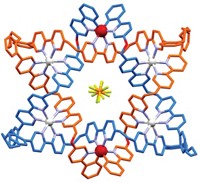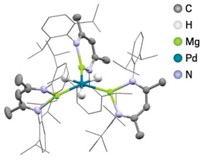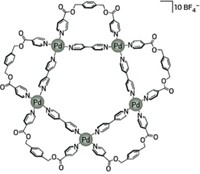Advertisement
Grab your lab coat. Let's get started
Welcome!
Welcome!
Create an account below to get 6 C&EN articles per month, receive newsletters and more - all free.
It seems this is your first time logging in online. Please enter the following information to continue.
As an ACS member you automatically get access to this site. All we need is few more details to create your reading experience.
Not you? Sign in with a different account.
Not you? Sign in with a different account.
ERROR 1
ERROR 1
ERROR 2
ERROR 2
ERROR 2
ERROR 2
ERROR 2
Password and Confirm password must match.
If you have an ACS member number, please enter it here so we can link this account to your membership. (optional)
ERROR 2
ACS values your privacy. By submitting your information, you are gaining access to C&EN and subscribing to our weekly newsletter. We use the information you provide to make your reading experience better, and we will never sell your data to third party members.
Materials
Two-Metal Cage Comes Together
One-pot self-assembly process forms 96 bonds
by Carmen Drahl
June 18, 2012
| A version of this story appeared in
Volume 90, Issue 25
By snapping 62 building blocks together in one flask, chemists have built a nanoscale cubic cage featuring two different metals (Angew. Chem. Int. Ed., DOI: 10.1002/anie.201202050). Their synthesis could help others build metal-organic architectures for catalysis or gas storage. Jonathan R. Nitschke and colleagues at the University of Cambridge took inspiration from biology, where chemical processes run side by side without interference. They made their cage with iron and platinum salts, along with precursors to a nitrogen-containing ligand that binds each metal in a slightly different environment. Nitschke says iron probably coordinates first, generating complexes that prevent platinum from forming anything but the desired cube. “Achieving self-assembly with different metals in a single complex is extremely difficult—very few examples are known, and they are rarely easy to handle,” says Richard J. Hooley of the University of California, Riverside, who works on similar self-assembly processes. Nitschke notes that the cage is soluble in acetonitrile, which may lead to applications complementary to those of metal-organic frameworks, which are used in the solid state. The new cage doesn’t sequester fullerenes, but Nitschke says the team has built a modified version that shows preliminary signs of binding guests.





Join the conversation
Contact the reporter
Submit a Letter to the Editor for publication
Engage with us on Twitter